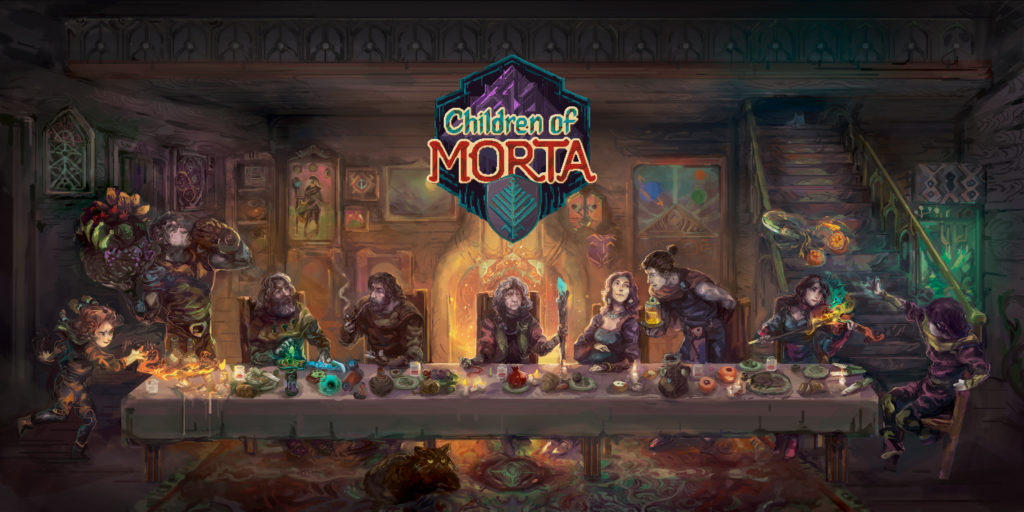
The Bergsons. It sounds like an old-timey TV show that ran in the 70s and made everyone feel good by the end of the episode. But the Bergsons are the family at the heart of Children of Morta, a pixel-based rogue-like from developer Dead Mage and publisher 11 Bit Studios. In Children of Morta, you play the entire Bergson family, assigned by the gods as the last line of defense against The Corruption threatening to overtake their world.
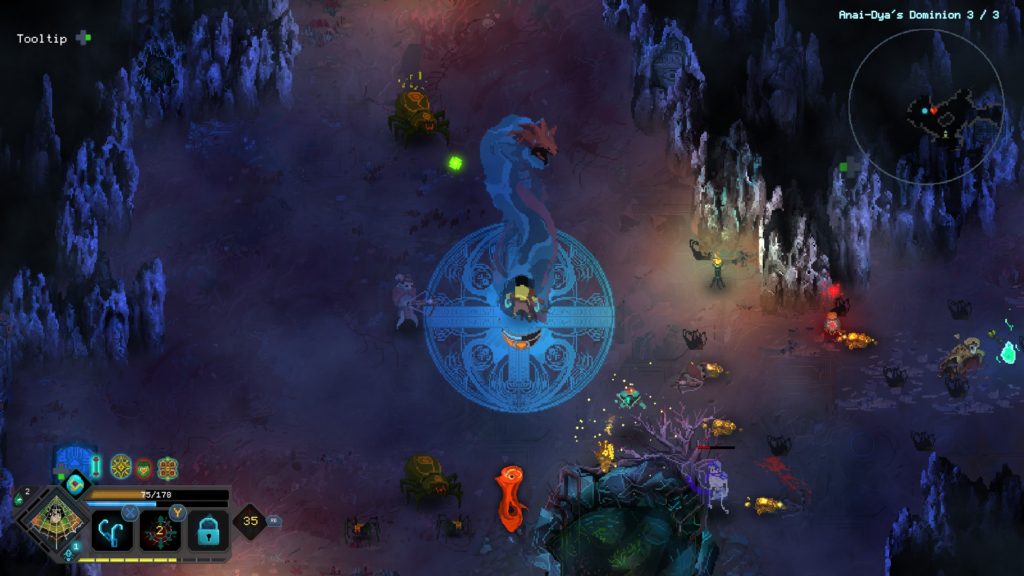
Children of Morta weaves a compelling narrative, primarily presented in narration format as the Bergsons act out each story section. There are bits of dialog smattered here and there, but only the narration is voiced and quite dramatically. It’s actually surprisingly reminiscent of a 90s movie trailer, quite over the top and compelling. The actual storyline is fairly thin but bit by bit, as you play you get to know the Bergsons and the small bits of narrative form a rich tapestry that’s fairly interesting.
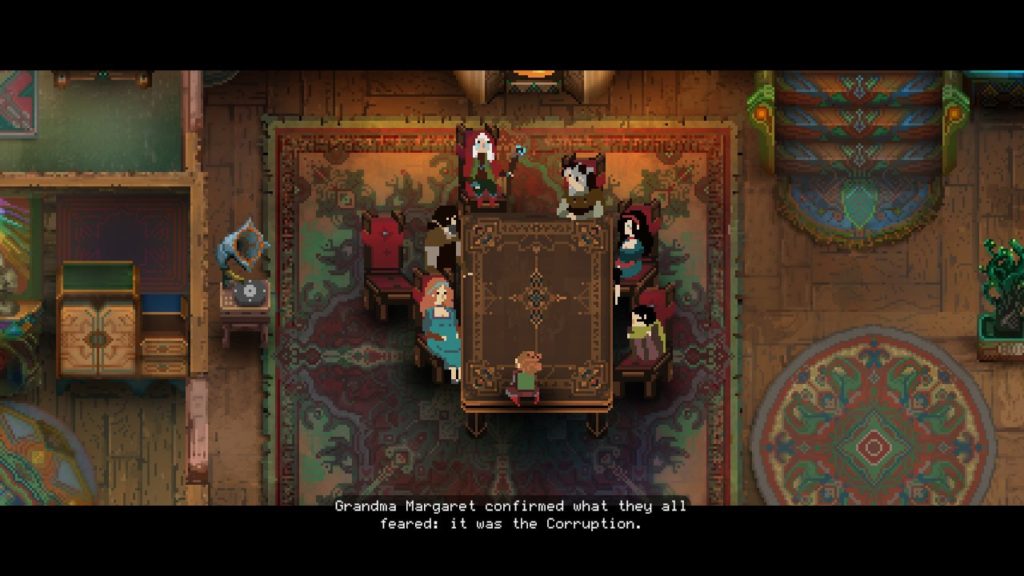
After the initial story, you venture down beneath the Bergson’s house and into the portals to the dungeons around Mount Morta. This is the meat of the game, a procedurally generated series of dungeons with mini-bosses and bosses that drives the story itself. Each member of the family is blessed by the gods and dying in the dungeon simply returns you to the manor house, often activating a story segment as well. Die enough times and there’s no story until you progress further, and die you most definitely will. This is one challenging game with vicious dungeons and slow, incremental progress.
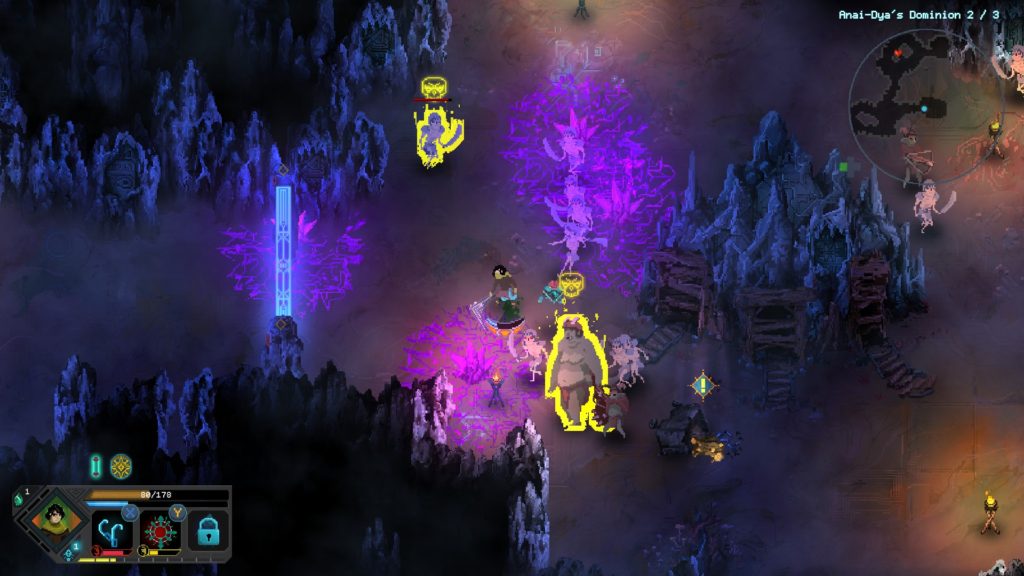
The way the Bergson family functions as somewhat of a unit is interesting. Each member that can enter the dungeon (John, the father at first, but later, five other members as well) can level up individually, but at certain milestones, their skills create bonuses that apply to the entire family. Skip out on playing any family member too much and you’ll miss out on their family bonuses, leaving your entire family weaker than they should be. This means that you’ll be replaying some levels quite a bit to build up, but gameplay is compelling and fun, so grinding isn’t a total slog.
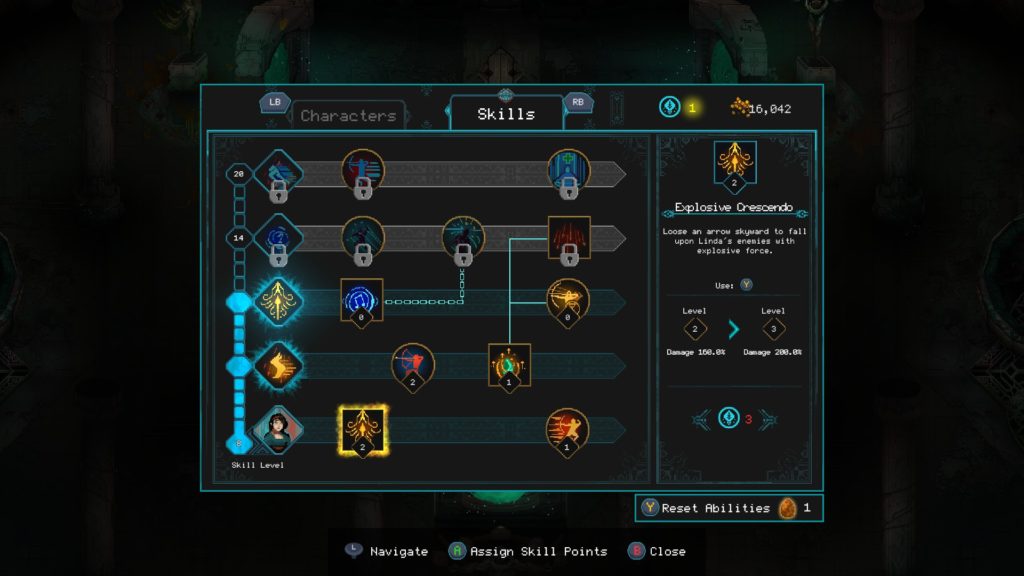
Each family member plays noticeably differently as well. John is a tank, attacking with sword and shield, while his daughter Linda is an archer with no close combat skills, playing markedly differently. This makes for difficulties if you choose the wrong type of family member for certain areas, such as Kevin, a close fighter with low defense in an area where there are a lot of enemy bowmen. Just getting close enough can be a struggle, especially if you haven’t leveled enough. Depending on your play style, there are two different ranged characters, two fighters, and two high-speed thief-style characters for a wide range of potential. As you play, if you focus too much on one character, they eventually develop corruption fatigue which significantly decreases base health, forcing you to rotate characters regularly. It’s best to practice all three styles and then find the characters that suit you once you’ve unlocked them all, but you’ll definitely use everyone.

Level design is procedural but each level has its share of traps, power-ups, unique enemies, and sidequests depending on where you are in the game. New enemies mean new attacks, and often ones you definitely aren’t ready for. Corruption-based creatures spawning from random corpses in cleared dungeon areas will probably catch you off guard a few times too. Safe spaces, designated by blue barricades are areas where you often get special items, but you can also use them as a shield to protect yourself from swarms of enemies, stepping out quickly to lash out then back in, especially if your health is low. For an action-based procedural game, combat is surprisingly tactical and planning ahead and not running too fast through a dungeon will typically be the only thing that keeps you alive.

You also collect morv (aka gold) from many enemies and chests and this money can be used by Uncle Ben and Grandma Margaret to upgrade your weapons and abilities. You will definitely need those upgrades so don’t skip a single chest or pot if you can avoid it. Any morv earned in the dungeon as well as any special items are returned magically with you when you die, regardless if you completed the dungeon or not, so don’t worry too much about dying but definitely try to mine as much as you can on each run! In addition to morv, there are weapon-enhancing runes, permanent (for the run) enhancements, useable items, and special attack items that enhance your chosen character in various ways. All of this is random so you might end up too weak to beat a section one time and power through the next with the same character. Obelisks give you timed power-ups of various sorts too, forcing you to rush to benefit from them. All in all, the mechanics at every level are quite well-designed.
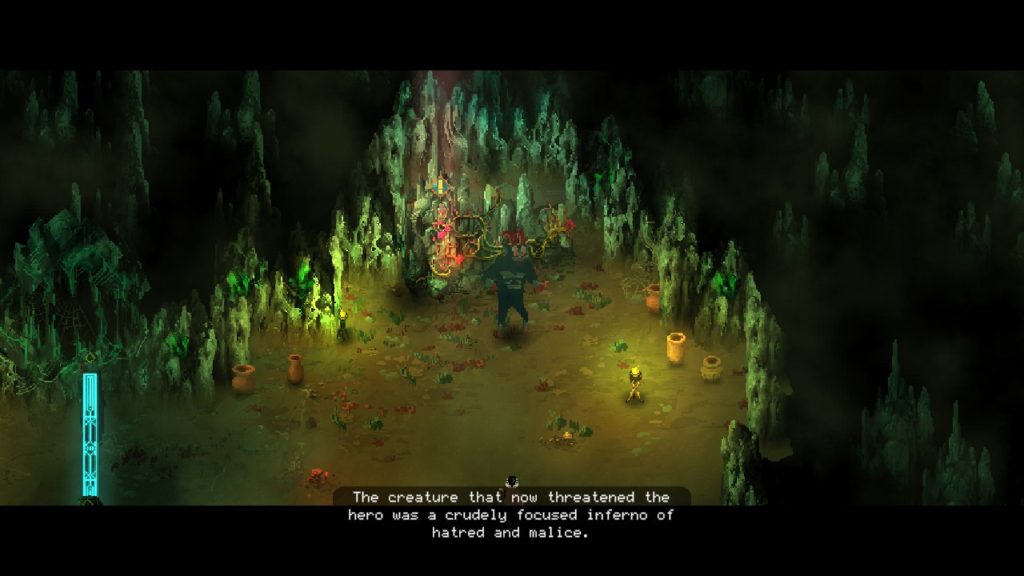
Visually, this is a dark game, especially for pixel-based art, and it can be surprisingly hard to see some of the spike traps and other pitfalls of the game. Pay close attention to your environment and expect new and nasty dangers with each successive level! For all that darkness though, things look very nice on the Switch, even in undocked mode, which is nice to see. There are three main sections to the game with a total of 8 sublevels between them and getting to the end will take some time. Depending on your skill level and daring, finishing Children of Morta might run you anywhere from 10 to 20 hours, definitely on the longer end if you’re trying to level everyone up.
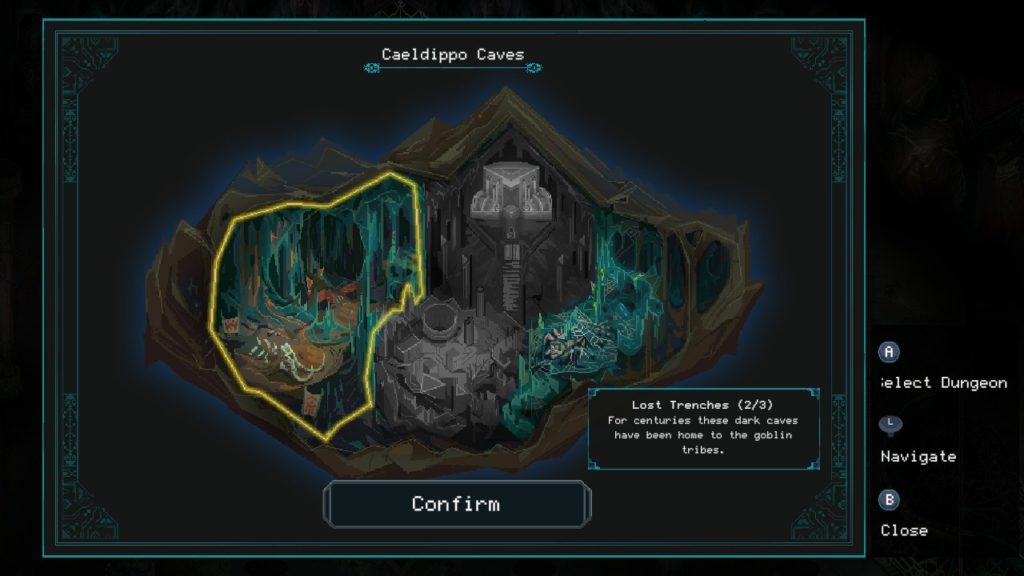
The music and sound effects are great in Children of Morta, even if you likely wouldn’t rush out and buy the soundtrack. The entire audio landscape fits well with the game and the narration, while a bit dramatic, is excellent as well. The game plays well too, running smoothly on the Switch with no choppiness and minimal loading between sections both docked and undocked. It’s an easy layout to use, even with Joycons and large hands, and also plays extremely well in docked mode with a Switch Controller Pro. Incidentally, due to the length of the stages, the pick-up-and-play nature of the Switch lends itself extremely well to Children of Morta and is likely the best format in which to play the game. Initial loads of levels do take a while, as does loading back to the manor house, but this simply encourages you even more to stay alive as long as possible and not frivolously rush through to get a bit of morv before dying.
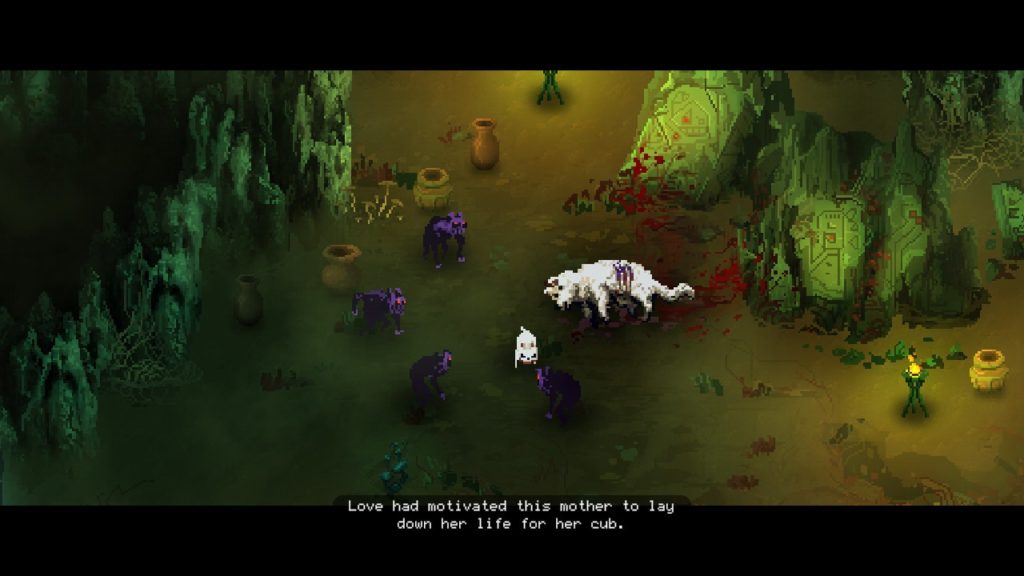
Boss fights are grueling endeavors that will leave you battered and weakened, so be prepared. Don’t be afraid to spend your points on healing rather than gimmicky items, because every new boss fight is a noticeable challenge that you’ll likely fail at one or even several times before you get the knack. It’s a long way back too, as there’s no reloading from a save point before bosses. That being said, the bosses are challenging and fun, but nothing too out of the ordinary in terms of monsters. They’re creative and cool though, and beating them is definitely gratifying.
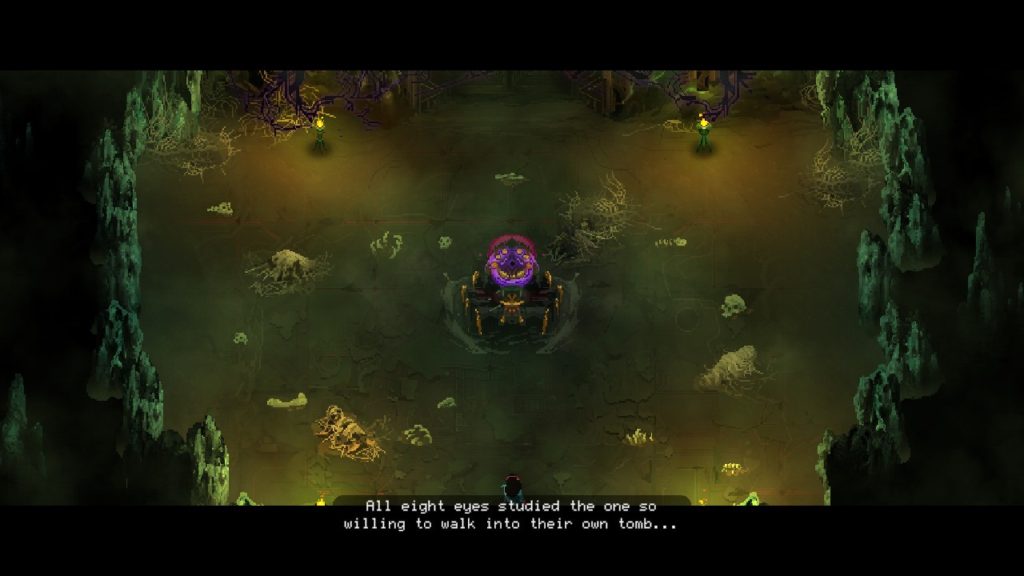
Across the board, Children of Morta is filled with excellent gameplay, dark and compelling visuals, and memorable characters. While the slow grind required towards the beginning of the game won’t appeal to all people and neither will the forced and unskippable narration between runs, overall, this is an absolutely excellent rogue-like done right which has just the right balance of light story-telling, combat, and management to keep you coming back for hours. At $22, there are no complaints, and currently, Children of Morta is on sale for $14.73 on the Switch eShop as well! Children of Morta is a solid indie title that anyone interested in rogue-likes or fun action games should definitely have in their library!
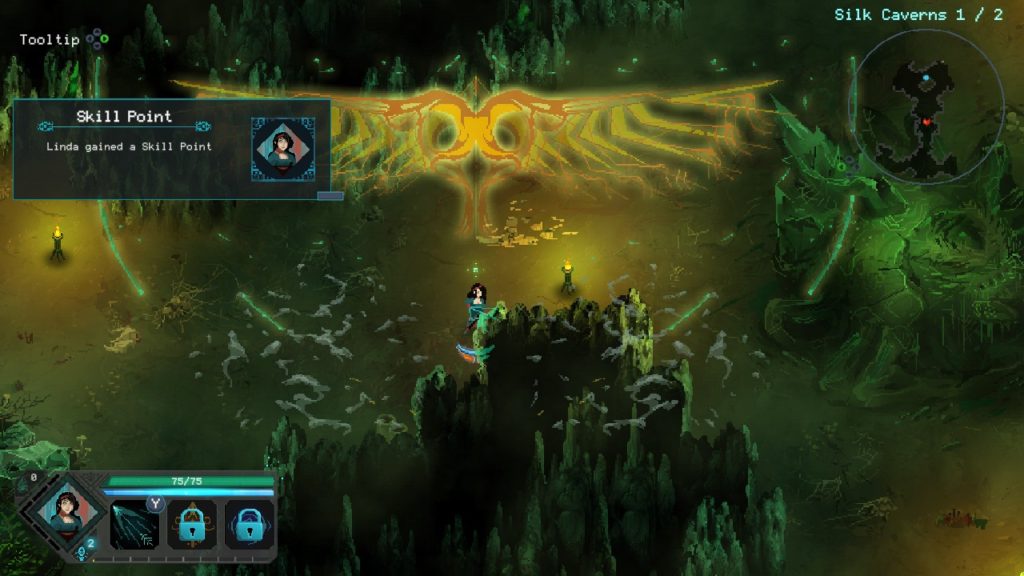
This review was based on a digital copy of Children of Morta provided by the publisher. It was played on a Nintendo Switch in both docked and undocked modes and was excellent on both. Children of Morta is also available for Steam, PS4, and Xbox One! Most of the images in this review are from actual game play. A couple are press shots due to the hectic nature of combat in the game!

